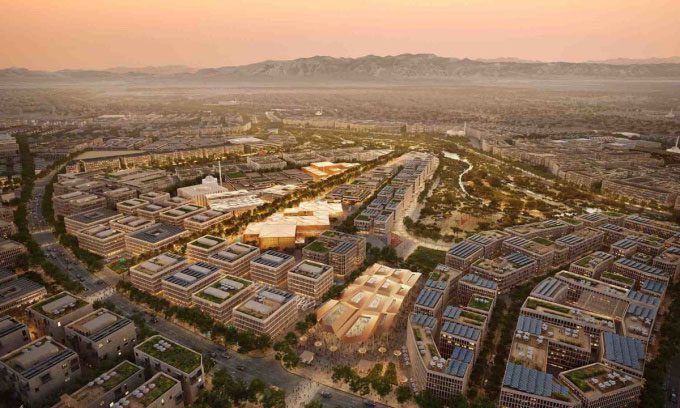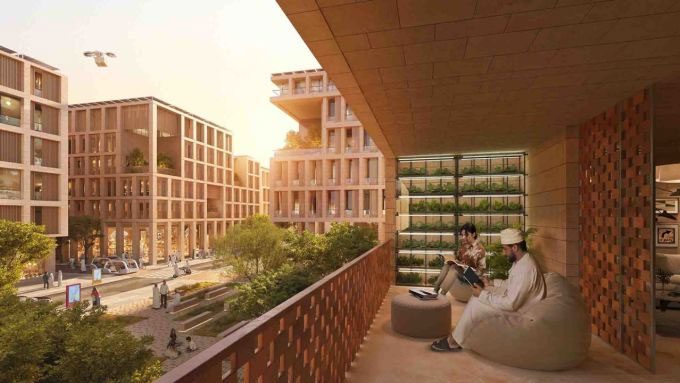Oman has unveiled plans to construct the Sultan Haitham smart city, covering an area of 14.8 km2, comparable to Beverly Hills but with a population three times larger, located near the capital, Muscat.

The Sultan Haitham smart city spans 14.8 km2. (Image: SOM/ATCHAIN).
The new project, led by the American architectural firm Skidmore, Owings & Merrill (SOM), will include 20,000 homes, a university, multiple schools, healthcare facilities, and mosques, as reported by CNN on August 18. This city, designed for a population of 100,000, is planned to be built on an undeveloped site in Al-Seeb, a few kilometers west of Oman’s capital Muscat.
The project is set to commence next year and will be completed in four phases. The first phase, extending to 2030, will develop a city center covering 5 km2 and six of the 19 residential districts planned. The final phase is expected to be completed by 2045 at the earliest.
According to Bernhard Rettig, a leader at SOM, the smart infrastructure of Sultan Haitham city will be used to monitor environmental factors such as air quality and water management. The project will also feature a traffic management system that utilizes real-time data from cameras and speed sensors to reroute vehicles and control traffic flow.
The Sultan Haitham project is part of Oman Vision 2040, an initiative aimed at enhancing the use of renewable energy and reducing dependence on oil, which currently accounts for over half of the country’s government revenue. SOM has stated that their plan aims to minimize human impact on the ecosystem, promote solar energy facilities, recycle wastewater, provide infrastructure for electric vehicles, and establish waste-to-energy plants. Oman targets that 30% of its electricity production will come from green sources by 2030.

Sultan Haitham city will provide 20,000 new homes. (Image: SOM/ATCHAIN).
SOM has noted that the design of the new city is suitable for the high temperatures and humidity in Muscat, where temperatures can exceed 43 degrees Celsius. The digital design features shaded streets surrounded by structures that appear to be made of brick and wood. The streets and buildings will be arranged in a way that maximizes shade and encourages natural ventilation.
A park is planned to be constructed in the center of Sultan Haitham city, featuring squares and a network of interconnected open spaces. The park will be located along a 7.5 km stretch of river designed to manage floodwaters in an area prone to seasonal flooding.


















































